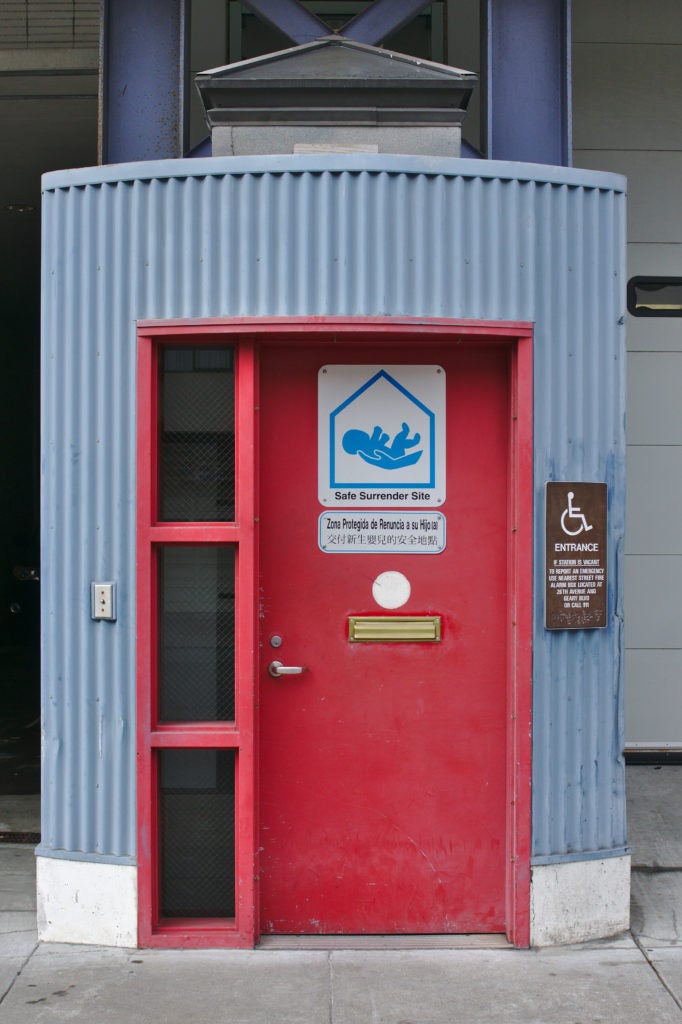Many women who become pregnant unintentionally find it very difficult to decide what to do next. There are a few choices of how they can proceed, such as abortion, adoption, and motherhood. However, what happens if a woman gives birth to a baby and then realizes that they are unable to properly care for the child? Unfortunately, this situation can lead to tragedy; some mothers have desperately abandoned their babies in unsafe locations, such as dumpsters, trash cans, hotels, strangers’ doorsteps, public streets, and forests. While some abandoned newborns are saved by kind strangers in the right place at the right time, not all of these children survive, and the women who commit these crimes are pursued and charged with child neglect and abandonment.1 In 1999, the United States started enacting Infant Safe Haven Laws, also known as “Baby Moses laws,” which were created to combat infant neglect and protect newborn children.1 These laws incentivize parents in crisis to safely give up their babies at designated locations where they can be protected and provided medical care until a permanent home is found.1 Now all 50 states, the District of Columbia, and Puerto Rico have forms of Infant Safe Haven legislation.1

Table of Contents
What are the Infant Safe Haven Laws?
Infant Safe Haven Laws vary in America by state, with each state government developing their own Safe Haven locations, hours of operation, and age limits for the newborns being abandoned. The purpose of these laws is to create designated spaces for parents in crisis to safely surrender their babies in their communities. At these locations, the babies will be protected and provided with proper medical care until a stable environment is found.1 The Infant Safe Haven Laws allow the parent—or in some states, a representative of the parent—to remain anonymous and to be protected from criminal charges and prosecution for child endangerment in exchange for surrendering the baby to a Safe Haven.1 When choosing to surrender a baby to a Safe Haven, the parent will also be renouncing their parental rights to the child.
Who Are Safe Haven Providers?
The purpose of a Safe Haven is to provide a location for the baby to receive urgent care. To accommodate this, Safe Haven providers are usually public service locations, such as fire stations, police stations, and emergency rooms. These locations may also include churches, health care clinics, or other places a state considers safe and acceptable.2
What Is the Process?

When a baby is taken to a Safe Haven location, the parent will not be asked any personal questions as long as the child shows no signs of abuse.1 In some states, the parent may be asked a few questions about their name, their own and their child’s medical history, and their family history.4 Any parental information that is given remains confidential and is only used to ensure that the child can be properly treated. However, the parent is not required to release any information.1 Some locations are particularly anonymous and discreet, as they have a small door or slot at the building where a parent in crisis can leave their newborn with no questions asked. If you or someone you know are considering using a Safe Haven, look into the various Safe Havens in your area to determine which one best fits your situation. As soon as the child is surrendered, the Safe Haven officials will provide any medical care the infant may need. The local child welfare department will then be notified of the surrendered infant.2 Then, the infant may stay at the Safe Haven location for a period of time or be transferred to a foster home.
What If the Parent Changes Their Mind?
While it is rare for a parent to change their mind once they have forfeited the infant to a Safe Haven, some states allow the parent to reclaim custody of their baby within a certain time period after the surrender. Ranging from 14 days to 30 days, these waiting periods allow time for the parent to speak with the authorities about making arrangements for the baby.3 However, it is important to check your state’s specific law as it may differ from others.
If you know a parent who may be in need of the Safe Haven services, you can find a Safe Haven location near you at https://www.nationalsafehavenalliance.org/maps/.
This web page also contains detailed information on the laws pertaining to each state. You may also call the 24/7 Safe Haven Hotline at 1-888-510-BABY or 1-888-510-2229 to obtain details on the address and directions to the closest Safe Haven in your state.4
Concluding Remarks
We hope that this article is useful in helping you understand the Infant Safe Haven Laws in the United States. When making this important decision, you should be aware of all options available to you, including Safe Havens. While you are pregnant, if you decide you want to end your pregnancy, you may be able to have a medical abortion or surgical abortion. Access to abortion varies from state to state in America and around the world, and our abortion resources article can help you learn more about what might be available to you. Before or after the child is born, you may consider adoption or safely surrendering the child by following the steps we described, or you may find after deliberation that parenthood is the right path for you. Ultimately, remember that you are not alone, and that there are resources available to help you get through your particular situation, whether or not you decide to keep your baby.
References
- Child Welfare Information Gateway. 2017. “Infant Safe Haven Laws.” U.S. Department of Health and Human Services, Children’s Bureau.
- The Office of Child Abuse Prevention. 2020. “Safely Surrender Baby Sites.” California Department of Social Services.
- Advokids: A Legal Resource for California Foster Children and Their Advocates. 2020. “Safe Surrender.” Advokids.
- Baby Safe Haven. 2011. “NSHA LAWS.” Safe Haven Laws by State | Baby Safe Haven. Retrieved (http://safehaven.tv/states/).
Last updated: 5 March 2020.
